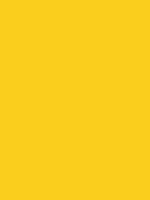#face1d Color Information
In a RGB color space, hex #face1d is composed of 98% red, 80.8% green and 11.4% blue. Whereas in a CMYK color space, it is composed of 0% cyan, 17.6% magenta, 88.4% yellow and 2% black. It has a hue angle of 48.1 degrees, a saturation of 95.7% and a lightness of 54.7%. #face1d color hex could be obtained by blending #ffff3a with #f59d00. Closest websafe color is: #ffcc33.
-
- R 98
- G 81
- B 11
-
- C 0
- M 18
- Y 88
- K 2
● #face1d color description : Vivid yellow.
#face1d Color Conversion
The hexadecimal color #face1d has RGB values of R:250, G:206, B:29 and CMYK values of C:0, M:0.18, Y:0.88, K:0.02. Its decimal value is 16436765.
| Hex triplet | face1d | #face1d |
|---|---|---|
| RGB Decimal | 250, 206, 29 | rgb(250,206,29) |
| RGB Percent | 98, 80.8, 11.4 | rgb(98%,80.8%,11.4%) |
| CMYK | 0, 18, 88, 2 | |
| HSL | 48.1°, 95.7, 54.7 | hsl(48.1,95.7%,54.7%) |
| HSV (or HSB) | 48.1°, 88.4, 98 | |
| Web Safe | ffcc33 | #ffcc33 |
| CIE-LAB | 84.255, 0.838, 81.512 |
|---|---|
| XYZ | 61.718, 64.558, 10.373 |
| xyY | 0.452, 0.472, 64.558 |
| CIE-LCH | 84.255, 81.516, 89.411 |
| CIE-LUV | 84.255, 38.112, 86.722 |
| Hunter-Lab | 80.348, -3.496, 48.59 |
| Binary | 11111010, 11001110, 00011101 |
Color Schemes with #face1d
Alternatives to #face1d
Below, you can see some colors close to #face1d. Having a set of related colors can be useful if you need an inspirational alternative to your original color choice.
#face1d Preview
This text has a font color of #face1d.
<span style="color:#face1d;">Text here</span>This paragraph has a background color of #face1d.
<p style="background-color:#face1d;">Content here</p>This element has a border color of #face1d.
<div style="border:1px solid #face1d;">Content here</div>.text {color:#face1d;}.background {background-color:#face1d;}.border {border:1px solid #face1d;}Shades and Tints of #face1d
A shade is achieved by adding black to any pure hue, while a tint is created by mixing white to any pure color. In this example, #040300 is the darkest color, while #fffcf0 is the lightest one.
-
#040300
#040300rgb(4,3,0) -
#171301
#171301rgb(23,19,1) -
#2b2201
#2b2201rgb(43,34,1) -
#3e3201
#3e3201rgb(62,50,1) -
#514102
#514102rgb(81,65,2) -
#645102
#645102rgb(100,81,2) -
#776003
#776003rgb(119,96,3) -
#8b7003
#8b7003rgb(139,112,3) -
#9e7f03
#9e7f03rgb(158,127,3) -
#b18f04
#b18f04rgb(177,143,4) -
#c49e04
#c49e04rgb(196,158,4) -
#d7ad05
#d7ad05rgb(215,173,5) -
#ebbd05
#ebbd05rgb(235,189,5)
-
#faca0a
#faca0argb(250,202,10) -
#face1d
#face1drgb(250,206,29) -
#fad230
#fad230rgb(250,210,48) -
#fbd643
#fbd643rgb(251,214,67) -
#fbda57
#fbda57rgb(251,218,87) -
#fcdf6a
#fcdf6argb(252,223,106) -
#fce37d
#fce37drgb(252,227,125) -
#fde790
#fde790rgb(253,231,144) -
#fdeba3
#fdeba3rgb(253,235,163) -
#fdefb7
#fdefb7rgb(253,239,183) -
#fef3ca
#fef3cargb(254,243,202) -
#fef8dd
#fef8ddrgb(254,248,221) -
#fffcf0
#fffcf0rgb(255,252,240)
Tones of #face1d
A tone is produced by adding gray to any pure hue. In this case, #8f8e88 is the less saturated color, while #face1d is the most saturated one.
-
#8f8e88
#8f8e88rgb(143,142,136) -
#98937f
#98937frgb(152,147,127) -
#a19976
#a19976rgb(161,153,118) -
#aa9e6d
#aa9e6drgb(170,158,109) -
#b3a364
#b3a364rgb(179,163,100) -
#bca95b
#bca95brgb(188,169,91) -
#c5ae52
#c5ae52rgb(197,174,82) -
#ceb349
#ceb349rgb(206,179,73) -
#d6b941
#d6b941rgb(214,185,65) -
#dfbe38
#dfbe38rgb(223,190,56) -
#e8c32f
#e8c32frgb(232,195,47) -
#f1c926
#f1c926rgb(241,201,38) -
#face1d
#face1drgb(250,206,29)
Color Blindness Simulator
Below, you can see how #face1d is perceived by people affected by a color vision deficiency. This can be useful if you need to ensure your color combinations are accessible to color-blind users.
